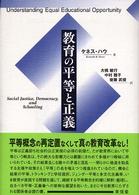Full Description
Ifanyonehadadoubtregardingtheimportanceofmacroeconomics,the?nancial andeconomiccrisisof2007-2009shouldhaverelievedhim/herofit.Furthermore, at times the unfolding drama and its historical background was an education in macroeconomicsinitself.Itseemedeveryonewasanxioustolearnaboutthecauses of the crisis, its turns and twists, and the possible remedies and their effecti- ness.Thisisbe?ttingsincemacroeconomics asweknowitnowwastheproduct ofanothereconomiccrisis. OnThursday, October 24, 1929 (known asBlack Thursday), thestockmarket crashed.Withinayear,thenumberofjoblessworkersclimbedtomorethanfour millionandhungryprotesterstooktothestreetsofNewYork.ThusbegantheGreat Depression, which in the course of the decades to come changed the economies ofindustrialcountries,fundamentallytransformedourvisionoftheeconomyand economicpolicy,andbroughtintoprominenceabranchofeconomicsthatin1933 RagnarFrisch christenedmacroeconomics. Overthenext80yearstheinteractionofeconomicevents,economictheory,and economicpolicyresultedinabodyofknowledgethatisanintegralpartofpolitical andeconomicdiscourseandindeedofeverydaylifeintheUnitedStatesandaround theworld.Economists,businessleaders,policymakers,andallconcernedcitizens needtobefamiliarwithmacroeconomics.
Macroeconomics is best understood in a historical context. The book offers an introduction to macroeconomic theory and policy as they relate to events and developments of thepast 80years. The United States economy and its?scal and monetarypoliciesarethemainconcerns,butbecausetheUnitedStateseconomy andworldeconomiesareintertwined,thestoriesoftheirinteractionswillalsobe recounted. Let me emphasize that the book is neither an economic history of the United States nor a history of economic thought. The purpose of this book is to teach macroeconomicsinthecontextofactualeventsandwithemphasisontherelati- shipsbetweenmacroeconomictheoryandpolicy. Students of economics, professional economists, and the interested public are the target audience. The book can be used as the main text or a supplement in advancedundergraduateandbeginninggraduatecoursesinmacroeconomics.P- fessionaleconomistsmay?nditausefulreference.Thebookisnotintendedfor vii viii Contents readerswithnobackgroundineconomics.Butanyonewhoisreadytoexpendthe effortandisnotputoffbyoccasionalequationscouldbene?tfromreadingit.
IwouldliketothankSpringer-VerlageditorsBarbaraFessandChristianeBeisel for their help, support, and understanding during the writing of this book. I also wouldliketothankAnnaDittrichofSpringer-VerlagandSaranyaBaskarandher colleagues at Integra for their excellent work in producing the book. Colleagues, friends, and students helped with their comments and questions. In particular I would like to thank Neil Alper, Oscar Brookins, William Dickens, Tess Forsell, AmaritaNattwhoreadallorlargepartsofthebookandmadeextensivesuggestions andcorrections.MythanksalsogoestoAndrewSumandMariaLuengo-Pradowho madeusefulcomments.StudentsinmygraduatemacroeconomicsclassYuanGao (Highfar),EmilyHalle,YelenaKuznetsov,AliciaParillo,andBrianSiebendetected errorsandmadesuggestionsforimprovement.
Contents
The Great Depression and Mr. Keynes Keynes, John Maynard .- The Post-War Economic Order.- Laying the Foundations of Keynesian Economics.- Keynesian Economics in Action.- Macroeconomics of an Open Economy.- The Collapse of Post-War International Economic Order.- The New Classical New Classical Revolt Against Activist Economic Policy.- Business Cycles Business Cycles : Evidence, Theory, and Policy.- Money, Monetary Policy, and Monetarism Monetarism .- Government Budget and Fiscal Policy.- The Reagan- Reagan, President Ronal Thatcher Thatcher, Margaret Revolution Reagan-Thatcher Revolution : The Age of Hayek Hayek, Friedrich and Schumpeter Schumpeter, Joseph .- Macroeconomics of Globalized Economies.- The Financial and Economic Crisis of 2007-2009.








